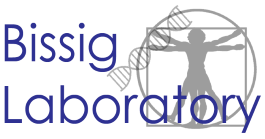TIRF Mouse
The TIRF mouse is used to develop humanized xenograft chimeras. They are a transgene free triple knockout model, lacking fah, rag2, and il2rg.
We use a tyrosinemia disease model as a selective pressure for the humanization process. TIRF mice lack the enzyme Fah, which leads to the build up of toxic intermediate, fumarylacetoacetate. The phenotype can be mostly rescued by administering NTBC, a small molecule drug that blocks the Hpd enzyme further up the tyrosine catabolism pathway. The mice are injected with patient-derived hepatocytes via the spleen, and NTBC treatment is withdrawn. Without the NTBC, the murine cells again build up toxic catabolites and undergo apoptosis. The human cells, not having this mutation, are able to repopulate the liver at efficiencies of up to 95%.


